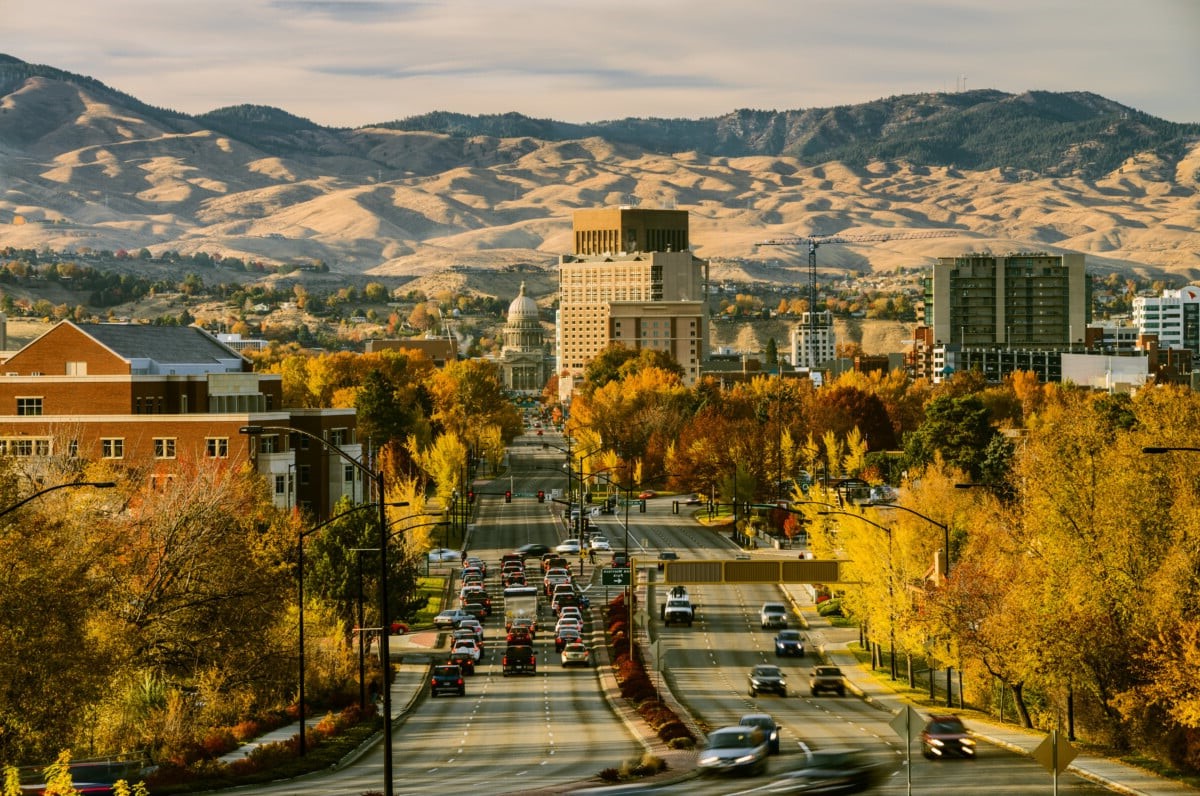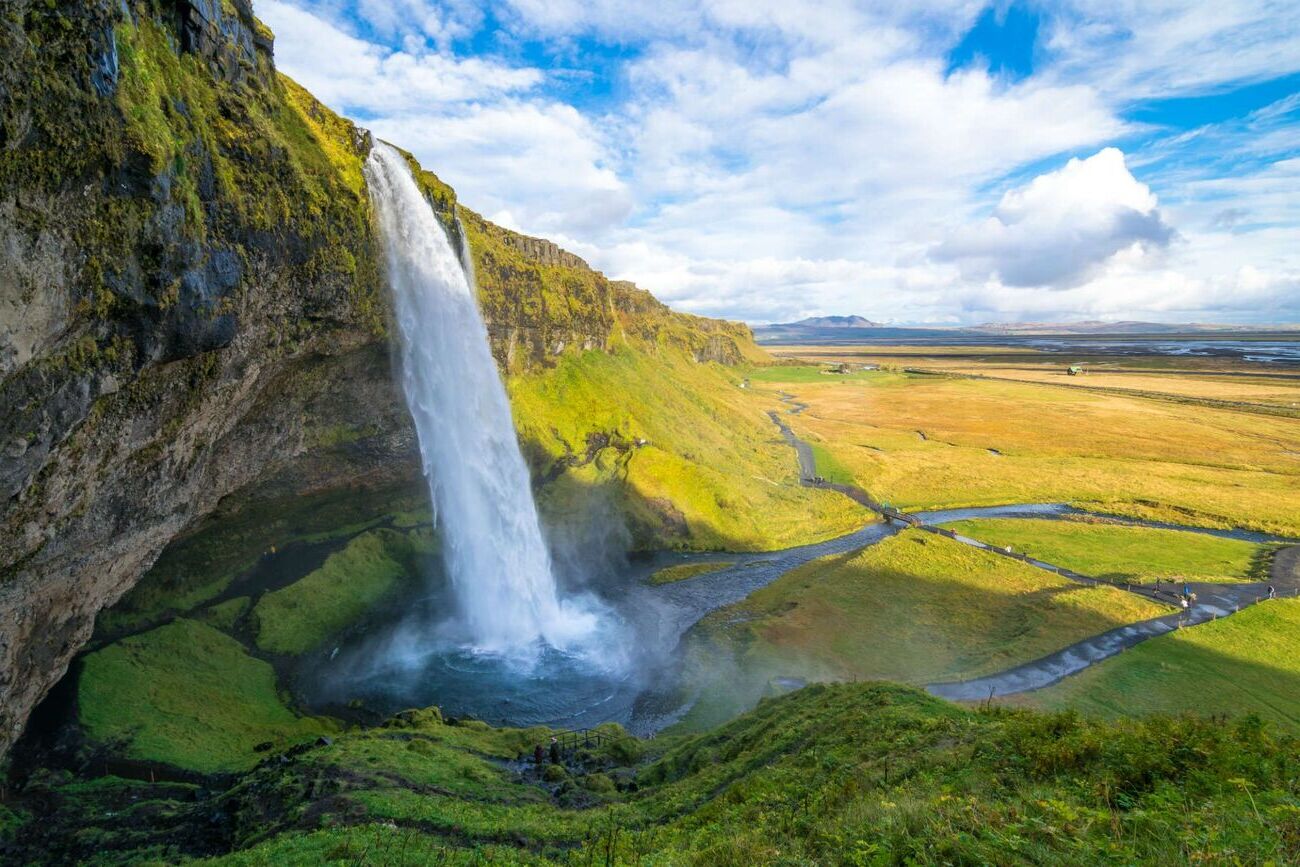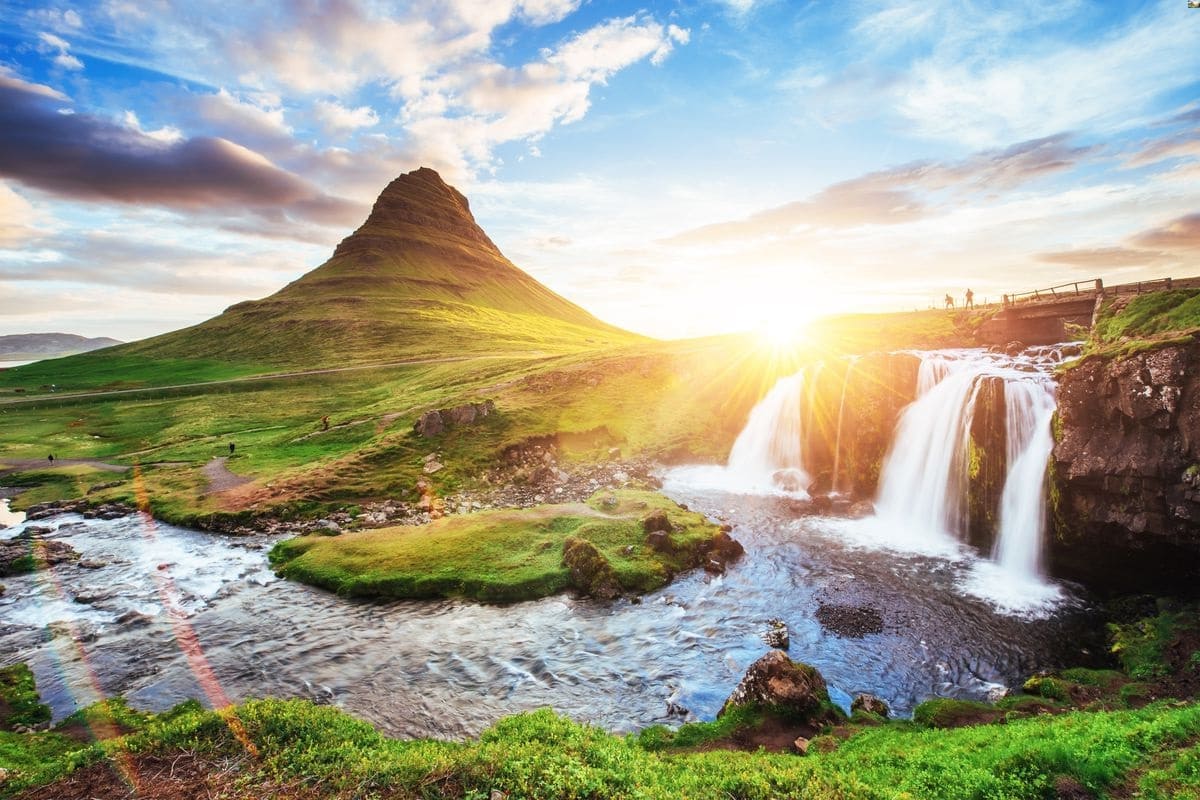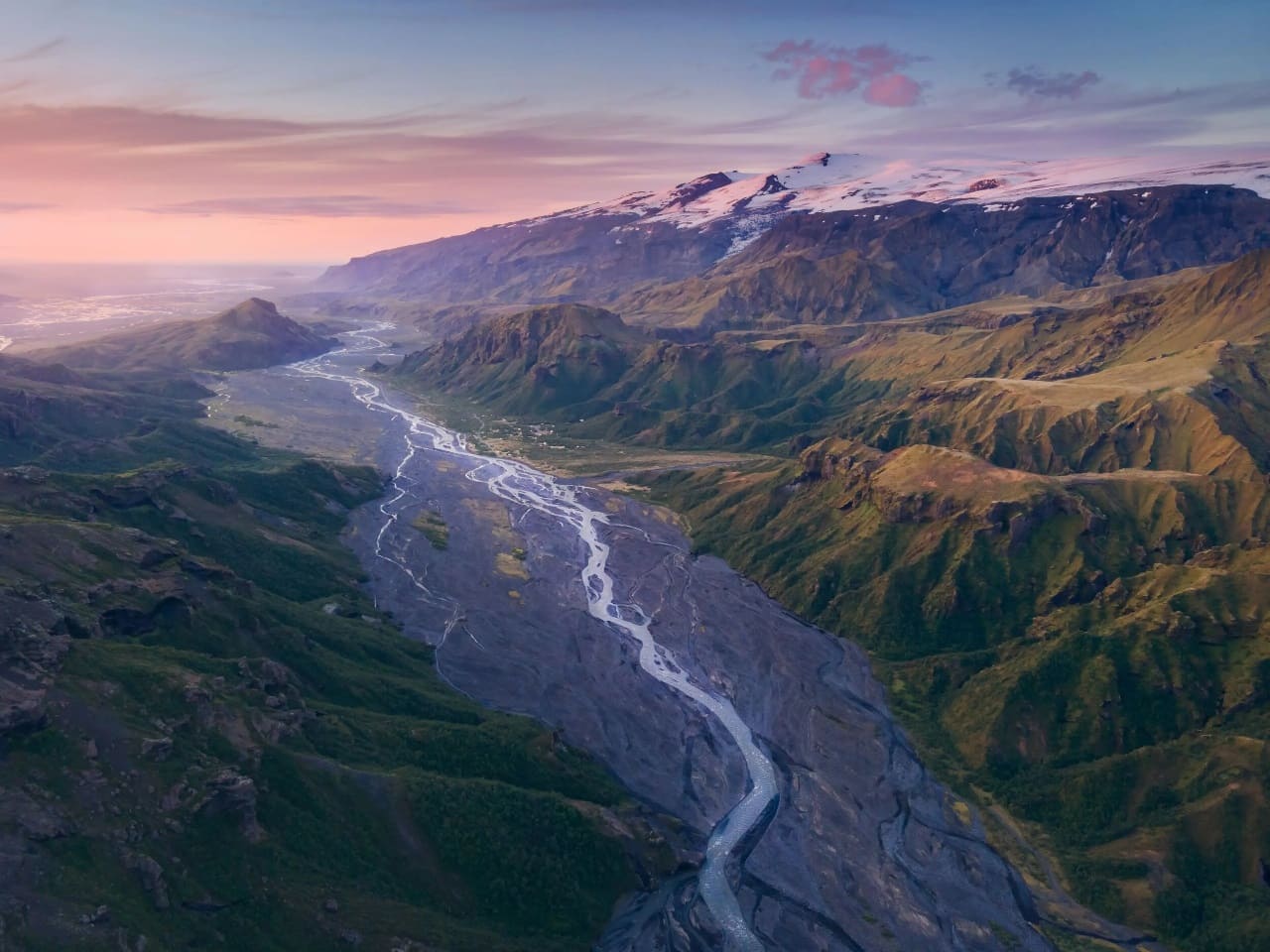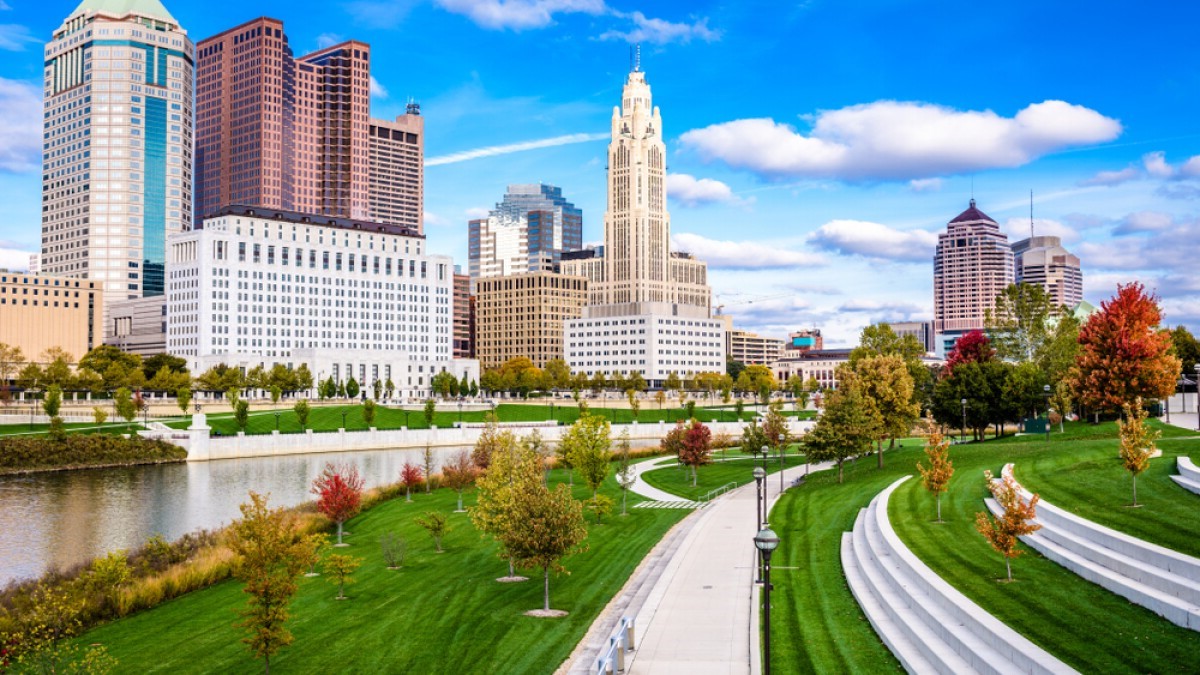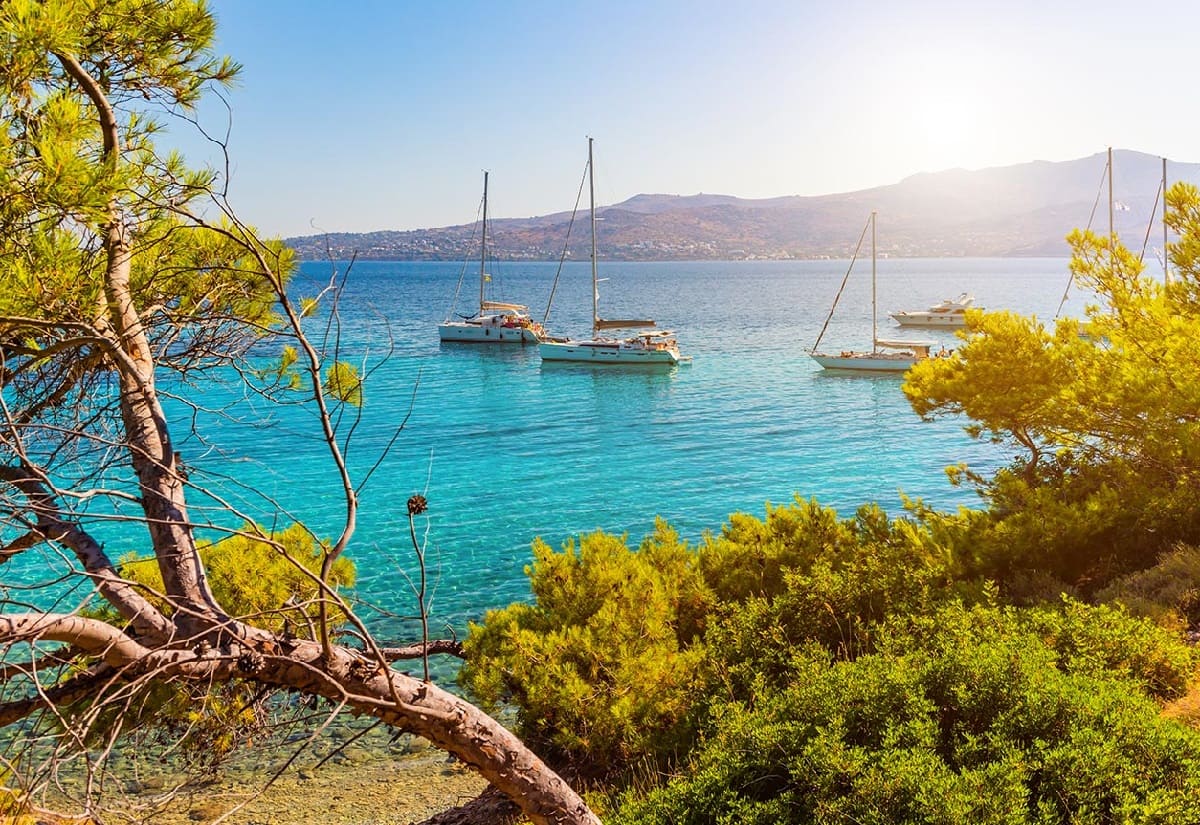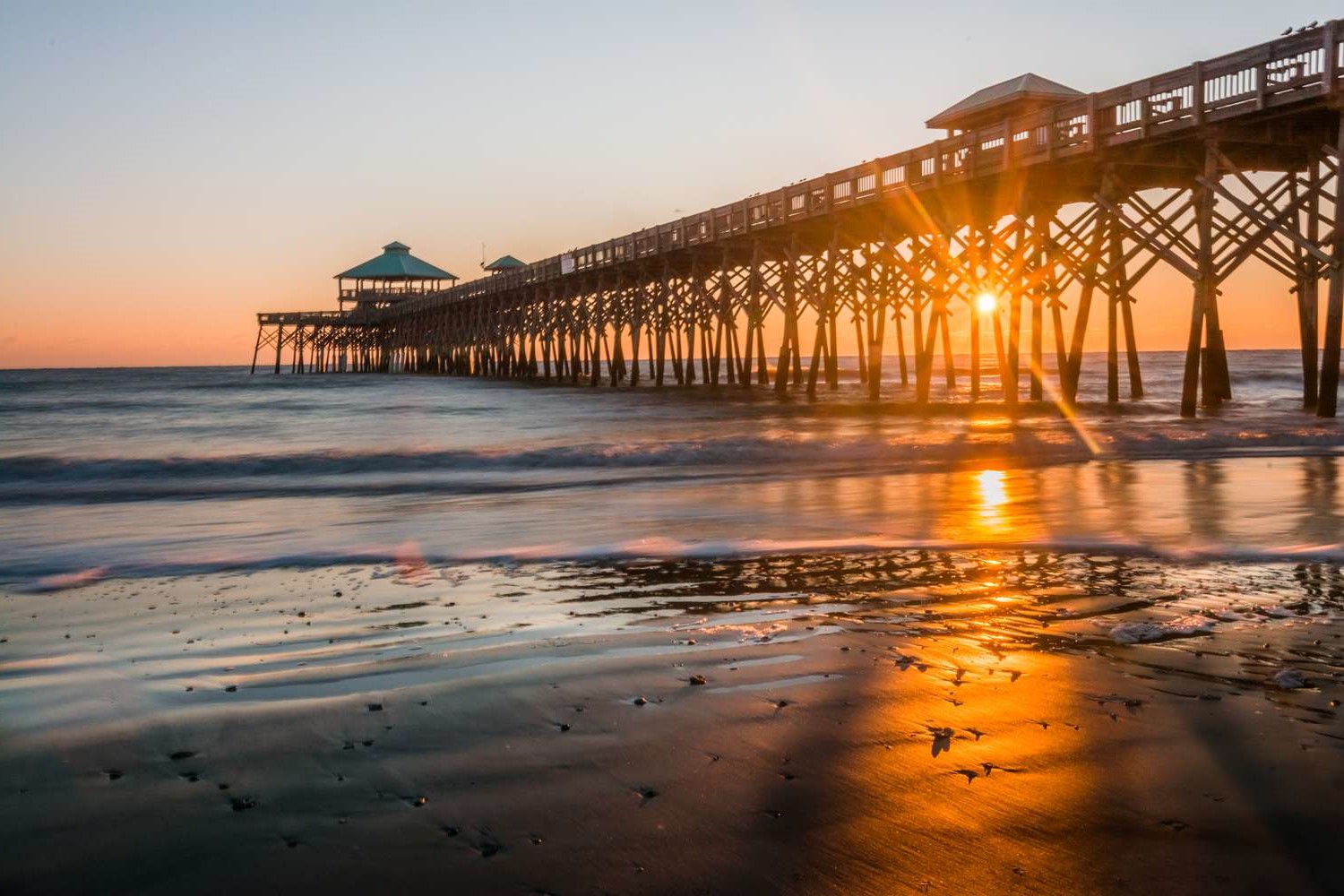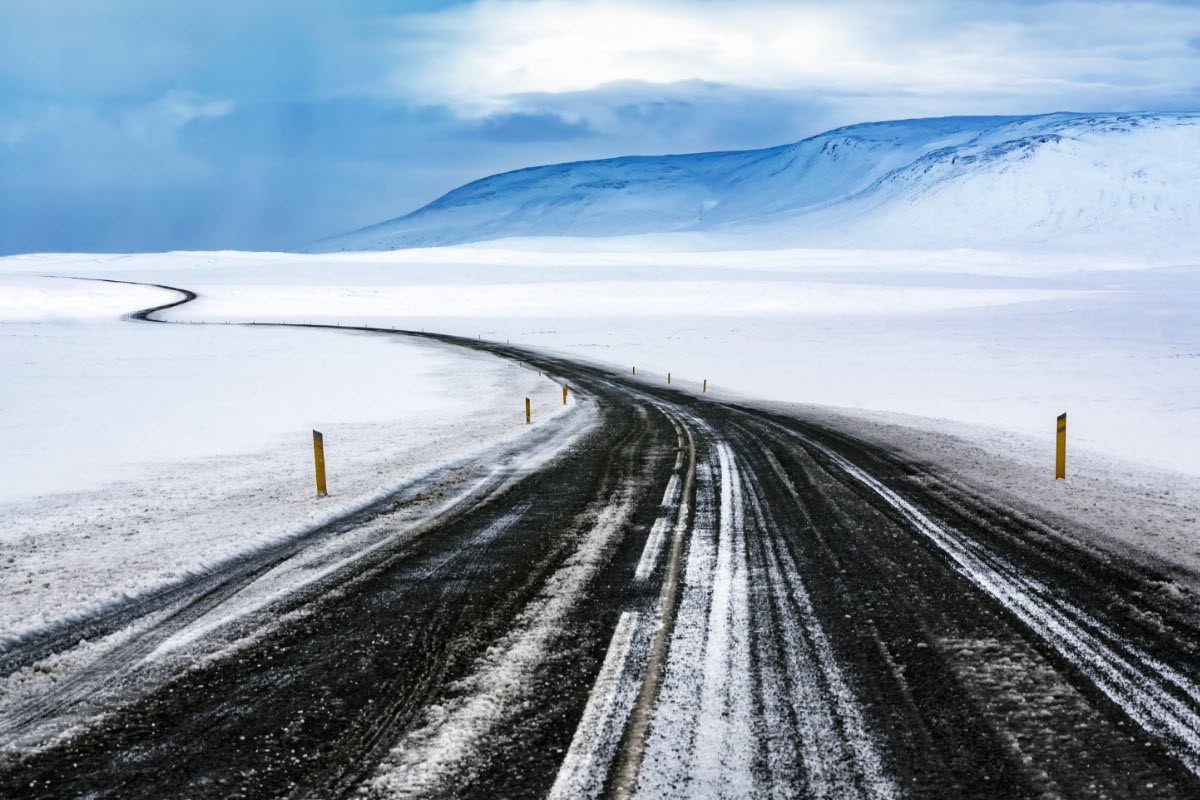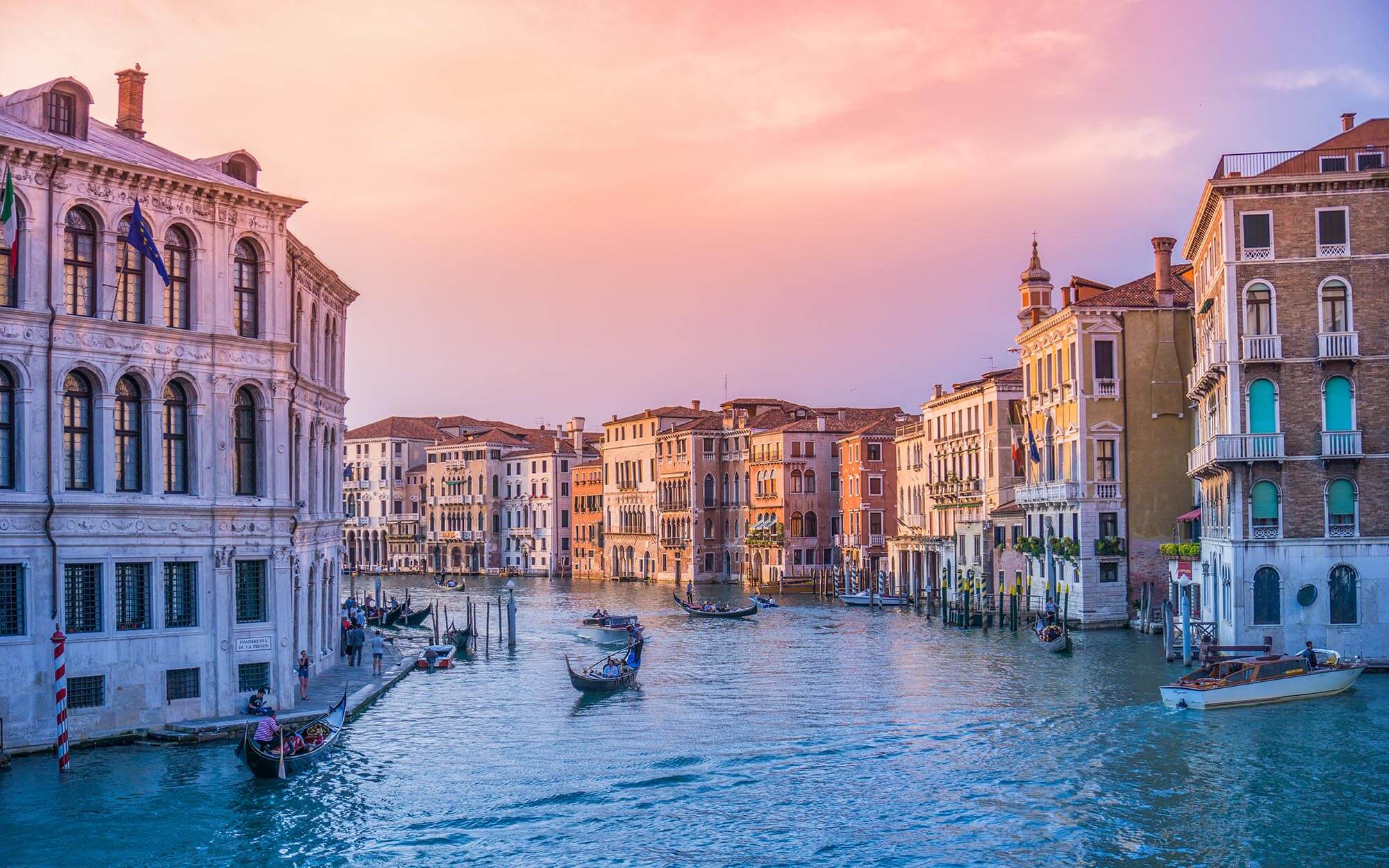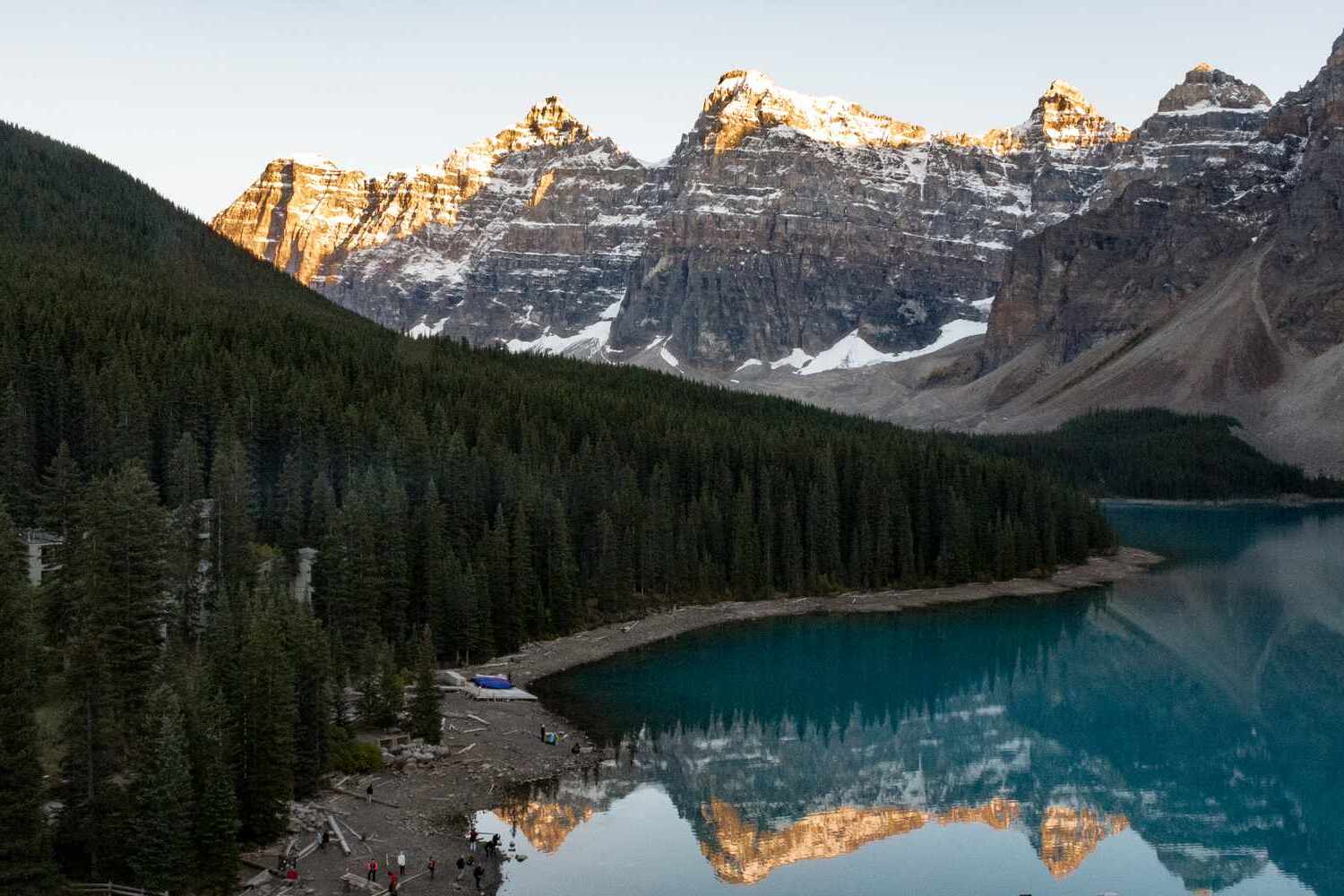Home>Weather and Climate>Iceland Weather: Monthly Climate Guide
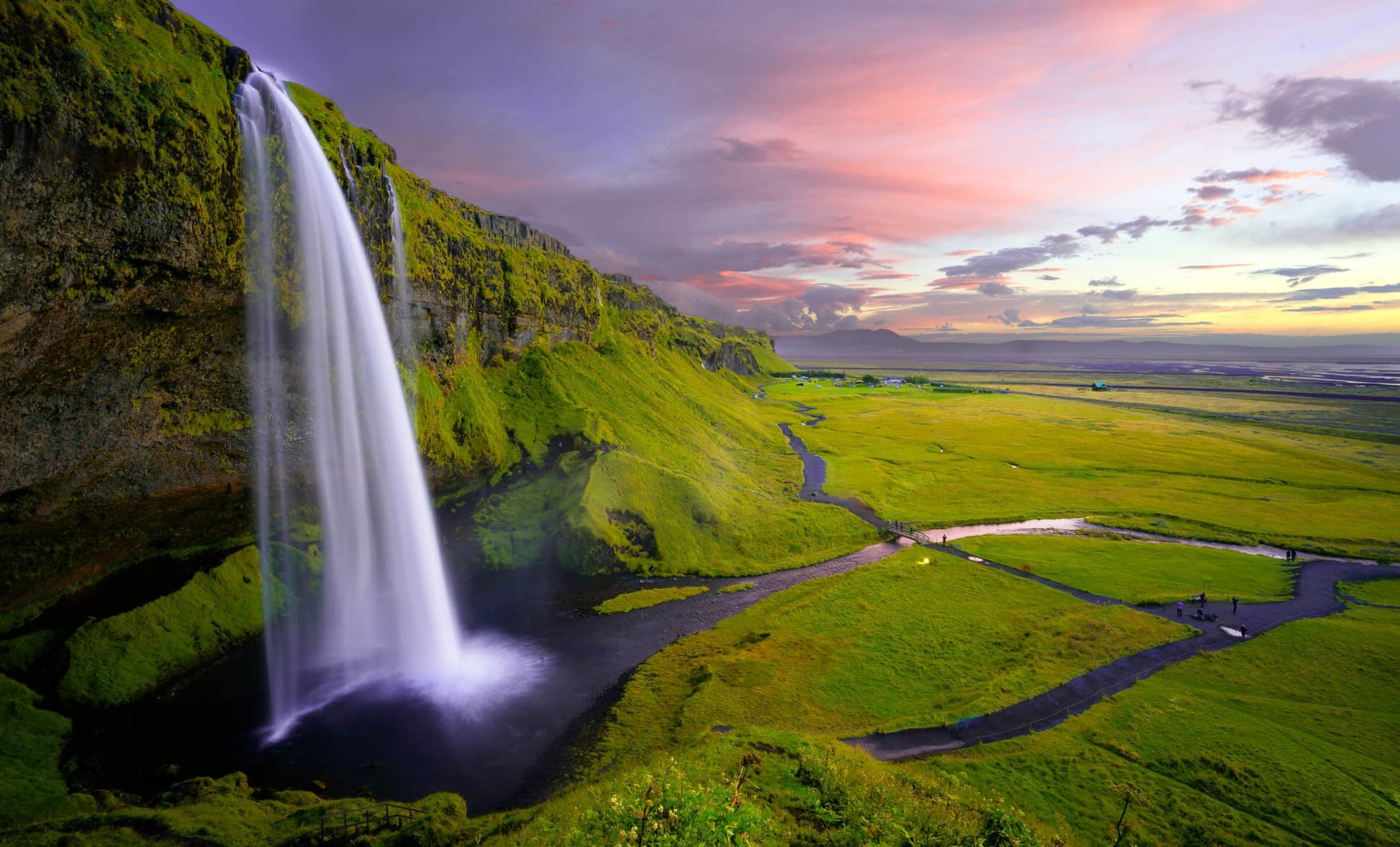

Weather and Climate
Iceland Weather: Monthly Climate Guide
Published: April 9, 2024
Plan your trip to Iceland with our monthly climate guide. Learn about the weather and climate to make the most of your visit.
(Many of the links in this article redirect to a specific reviewed product. Your purchase of these products through affiliate links helps to generate commission for Temperatures.com, at no extra cost. Learn more)
Table of Contents
Introduction
Iceland, a land of stunning natural beauty and dramatic landscapes, is renowned for its ever-changing weather and unique climate. Situated at the edge of the Arctic Circle, this Nordic island nation experiences a diverse range of weather patterns throughout the year, making it a fascinating destination for weather enthusiasts and nature lovers alike.
The weather in Iceland is heavily influenced by its geographical location, with the meeting of the warm Gulf Stream and the cold Arctic air creating a dynamic and unpredictable climate. From the ethereal dance of the Northern Lights in the winter to the endless days of the Midnight Sun in the summer, Iceland's weather offers a captivating spectacle that is unlike anywhere else on Earth.
In this comprehensive monthly climate guide, we will delve into the intricate details of Iceland's weather patterns, providing valuable insights into what to expect during each month of the year. Whether you are planning a visit to witness the otherworldly beauty of the Icelandic winter or bask in the enchanting glow of the summer sun, this guide will equip you with the knowledge needed to make the most of your Icelandic adventure.
Join us on a journey through the ever-changing Icelandic weather, as we unravel the mysteries of this captivating land and uncover the unique climatic experiences that await you in each month. From the snow-covered landscapes of January to the vibrant hues of the autumn foliage in September, Iceland's weather is a mesmerizing tapestry that paints a different picture with each passing month.
So, fasten your seatbelts and prepare to embark on a weather odyssey through the enchanting realms of Iceland. Let's explore the nuances of Iceland's climate, month by month, and discover the awe-inspiring beauty that unfolds with the changing seasons.
Weather in January
January marks the heart of winter in Iceland, where the landscape is transformed into a glistening wonderland adorned with a blanket of pristine snow. The weather during this month is characterized by short daylight hours and a sense of ethereal tranquility that envelops the entire island.
Temperature and Precipitation: The average temperature in January hovers around 0°C (32°F), with variations depending on the region. Coastal areas experience milder temperatures compared to inland regions, where the mercury can plummet even further. Precipitation is a common occurrence, with snowfall gracing the land and adding to the enchanting winter scenery.
Daylight Hours: January offers limited daylight, with only a few hours of precious sunlight each day. This creates a unique ambiance, as the soft glow of the winter sun bathes the snow-covered terrain in a mesmerizing light, casting long shadows and creating a captivating contrast of dark and light.
Northern Lights: One of the most enchanting phenomena during January is the captivating display of the Northern Lights. The extended darkness provides an ideal backdrop for witnessing the dance of the auroras across the night sky, painting it with vibrant hues of green, purple, and blue.
Outdoor Activities: Despite the chilly weather, January presents ample opportunities for outdoor adventures. From snowshoeing across pristine landscapes to embarking on exhilarating glacier hikes, Iceland's winter wonderland offers a playground for those seeking unique and unforgettable experiences.
Cultural Events: Embracing the cozy ambiance of winter, January in Iceland is also a time for cultural celebrations and gatherings. From traditional music festivals to local events that showcase the rich heritage of the Icelandic people, visitors have the chance to immerse themselves in the warmth of community spirit amidst the wintry surroundings.
January in Iceland is a time of contrasts, where the serene beauty of the snow-covered vistas harmonizes with the vibrant energy of cultural festivities. It is a month that invites visitors to witness the magic of winter in its purest form, as Iceland's weather paints a captivating portrait of natural splendor and cultural richness.
As we bid farewell to the captivating winter month of January, let's venture further into the ever-changing tapestry of Iceland's weather, exploring the unique experiences that each month brings.
Weather in February
As the winter season continues to hold its grip on Iceland, February presents a captivating blend of wintry enchantment and the subtle promise of the impending arrival of spring. The weather during this month retains the hallmark features of Iceland's winter, offering a mesmerizing tableau of snow-clad landscapes and celestial wonders.
Temperature and Precipitation: February maintains the chilly embrace of winter, with average temperatures hovering around -1°C (30°F). While the temperatures remain cold, the gradual lengthening of daylight hours hints at the gradual transition towards the arrival of spring. Precipitation, often in the form of snow, continues to dust the Icelandic terrain, adding to the ethereal charm of the winter scenery.
Daylight Hours: One of the most notable aspects of February is the perceptible increase in daylight hours, offering a glimmer of hope amidst the winter chill. The soft glow of the sun lingers a little longer each day, casting a warm hue over the snow-covered vistas and infusing the landscape with a sense of burgeoning vitality.
Winter Activities: February provides an ideal setting for a myriad of winter activities, from exhilarating snowmobiling adventures to the tranquil allure of ice cave explorations. The pristine snow-covered expanses beckon visitors to partake in the thrill of dog sledding or to marvel at the crystalline beauty of frozen waterfalls, creating unforgettable memories amidst the winter wonderland.
Natural Wonders: The captivating dance of the Northern Lights continues to grace the night sky in February, offering enchanting displays of luminous ribbons and shimmering curtains of light. The extended darkness provides an optimal backdrop for witnessing this celestial spectacle, inviting visitors to revel in the awe-inspiring beauty of the auroras.
Cultural Festivities: Embracing the spirit of the season, February in Iceland is a time for cultural celebrations and communal gatherings. From traditional music festivals to local events that honor Iceland's rich heritage, visitors have the opportunity to immerse themselves in the warmth of Icelandic hospitality amidst the wintry surroundings.
February in Iceland encapsulates the essence of winter's allure, where the delicate balance between the remnants of winter and the promise of spring creates a captivating atmosphere. It is a month that invites visitors to witness the evolving beauty of the Icelandic landscape, as nature prepares to transition into a new season.
As we continue our journey through the ever-changing tapestry of Iceland's weather, let's delve further into the unique experiences that each month unveils, offering a deeper understanding of the captivating climatic nuances that define this extraordinary land.
Weather in March
March heralds the gradual transition from winter to the much-anticipated arrival of spring in Iceland. As the days grow longer and the sun begins to assert its warming presence, the weather undergoes a subtle metamorphosis, offering a captivating blend of wintry remnants and the promise of burgeoning vitality.
Temperature and Precipitation: March marks a perceptible shift in temperatures, with average highs reaching around 3°C (37°F) and lows hovering near -2°C (28°F). The gradual thawing of the landscape becomes evident as the snow begins to recede, revealing the earth's awakening beneath. While snowfall is still a possibility, it often gives way to rain showers, contributing to the gradual transition from winter's icy grip to the nascent embrace of spring.
Daylight Hours: One of the most remarkable aspects of March is the noticeable increase in daylight hours, as the sun graces the Icelandic skies for longer periods each day. The extended daylight infuses the surroundings with a renewed sense of vitality, casting a warm glow over the awakening landscapes and signaling the imminent arrival of spring's vibrant hues.
Natural Transformations: March witnesses the gradual transformation of Iceland's terrain, as the snow-covered vistas yield to the emergence of verdant landscapes and the delicate blossoming of early spring flowers. The cascading waterfalls, once adorned with icicles, now glisten with the rejuvenating flow of melting snow, creating a symphony of natural rejuvenation that captivates the senses.
Outdoor Explorations: The changing weather in March invites visitors to partake in a myriad of outdoor adventures, from invigorating hikes through the awakening wilderness to the exhilarating thrill of exploring ice caves adorned with the remnants of winter's icy embrace. The transition from winter to spring offers a unique opportunity to witness the dynamic interplay of nature's elements, creating a tapestry of experiences that resonate with the essence of seasonal transformation.
Cultural Festivities: Embracing the spirit of the changing season, March in Iceland is a time for cultural celebrations and communal gatherings that honor the arrival of spring. From traditional music festivals that herald the awakening of nature to local events that showcase the rich heritage of the Icelandic people, visitors have the chance to immerse themselves in the vibrant tapestry of Icelandic culture amidst the evolving landscapes.
March in Iceland encapsulates the delicate balance between the fading remnants of winter and the burgeoning vitality of spring, offering a captivating tableau of natural transformations and cultural celebrations. It is a month that invites visitors to witness the evolving beauty of the Icelandic landscape as nature prepares to transition into a new season, heralding the arrival of spring's vibrant splendor.
Weather in April
April marks a pivotal juncture in Iceland's climatic narrative, as the transition from winter to spring unfolds with captivating allure. The weather during this month embodies the essence of transformation, offering a mesmerizing blend of lingering wintry elements and the burgeoning vitality of the impending spring.
Temperature and Precipitation: April signifies a notable shift in temperatures, with average highs reaching around 5°C (41°F) and lows hovering near 0°C (32°F). The gradual warming of the Icelandic landscapes becomes increasingly evident as the remnants of winter yield to the burgeoning signs of spring. While snowfall is still a possibility, it often gives way to gentle rain showers, contributing to the gradual emergence of verdant landscapes.
Daylight Hours: One of the most remarkable aspects of April is the substantial increase in daylight hours, as the sun graces the Icelandic skies for extended periods each day. The lengthening days infuse the surroundings with a renewed sense of vitality, casting a warm glow over the awakening landscapes and signaling the arrival of spring's vibrant hues.
Natural Transformations: April witnesses the remarkable metamorphosis of Iceland's terrain, as the lingering snow gradually recedes, revealing the earth's awakening beneath. The once snow-clad landscapes give way to the emergence of vibrant greenery and the delicate blossoming of early spring flowers. The cascading waterfalls, once adorned with remnants of winter, now flow freely, creating a symphony of natural rejuvenation that captivates the senses.
Outdoor Explorations: The changing weather in April invites visitors to partake in a myriad of outdoor adventures, from invigorating hikes through the awakening wilderness to the exhilarating thrill of exploring ice caves adorned with the remnants of winter's icy embrace. The transition from winter to spring offers a unique opportunity to witness the dynamic interplay of nature's elements, creating a tapestry of experiences that resonate with the essence of seasonal transformation.
Cultural Festivities: Embracing the spirit of the changing season, April in Iceland is a time for cultural celebrations and communal gatherings that honor the arrival of spring. From traditional music festivals that herald the awakening of nature to local events that showcase the rich heritage of the Icelandic people, visitors have the chance to immerse themselves in the vibrant tapestry of Icelandic culture amidst the evolving landscapes.
April in Iceland encapsulates the delicate balance between the fading remnants of winter and the burgeoning vitality of spring, offering a captivating tableau of natural transformations and cultural celebrations. It is a month that invites visitors to witness the evolving beauty of the Icelandic landscape as nature prepares to transition into a new season, heralding the arrival of spring's vibrant splendor.
Weather in May
May heralds the arrival of spring in full bloom, casting a vibrant tapestry of color and vitality across the Icelandic landscapes. The weather during this month embodies the essence of rejuvenation, as nature awakens from its wintry slumber and bursts forth with a profusion of life and energy.
Temperature and Precipitation: May signifies a notable shift in temperatures, with average highs reaching around 9°C (48°F) and lows hovering near 3°C (37°F). The warming embrace of spring becomes increasingly palpable as the Icelandic terrain undergoes a remarkable transformation. While occasional rain showers are not uncommon, they contribute to the nourishment of the burgeoning flora and the creation of lush, verdant landscapes.
Daylight Hours: One of the most remarkable aspects of May is the substantial increase in daylight hours, as the sun graces the Icelandic skies for extended periods each day. The lengthening days infuse the surroundings with a renewed sense of vitality, casting a warm glow over the awakening landscapes and signaling the arrival of spring's vibrant hues.
Natural Transformations: May witnesses the remarkable metamorphosis of Iceland's terrain, as the vestiges of winter give way to a burgeoning explosion of life. The once-dormant landscapes burst forth with a profusion of vibrant greenery, adorned with the delicate blossoms of wildflowers that carpet the meadows and hillsides. The cascading waterfalls, once adorned with remnants of winter, now flow freely, creating a symphony of natural rejuvenation that captivates the senses.
Outdoor Explorations: The changing weather in May invites visitors to partake in a myriad of outdoor adventures amidst the burgeoning landscapes. From invigorating hikes through the lush wilderness to the exhilarating thrill of exploring the diverse array of hiking trails, May offers a unique opportunity to witness the dynamic interplay of nature's elements, creating a tapestry of experiences that resonate with the essence of seasonal transformation.
Cultural Festivities: Embracing the spirit of the vibrant season, May in Iceland is a time for cultural celebrations and communal gatherings that honor the arrival of spring. From traditional music festivals that herald the awakening of nature to local events that showcase the rich heritage of the Icelandic people, visitors have the chance to immerse themselves in the vibrant tapestry of Icelandic culture amidst the blossoming landscapes.
May in Iceland encapsulates the essence of spring's allure, where the burgeoning vitality of the season creates a captivating atmosphere. It is a month that invites visitors to witness the evolving beauty of the Icelandic landscape as nature bursts forth with a profusion of life, heralding the arrival of spring's vibrant splendor.
Weather in June
June marks the onset of summer in Iceland, heralding a transformative shift in the country's weather and landscapes. As the sun graces the Icelandic skies for extended periods, the weather undergoes a remarkable metamorphosis, offering a captivating blend of warmth, vitality, and natural splendor.
Temperature and Precipitation: June signifies a notable rise in temperatures, with average highs reaching around 11°C (52°F) and lows hovering near 6°C (43°F). The warming embrace of summer becomes increasingly palpable as the Icelandic terrain undergoes a remarkable transformation. While occasional rain showers are not uncommon, they contribute to the nourishment of the burgeoning flora and the creation of lush, verdant landscapes.
Daylight Hours: One of the most remarkable aspects of June is the substantial increase in daylight hours, as the sun graces the Icelandic skies for extended periods each day. The lengthening days infuse the surroundings with a renewed sense of vitality, casting a warm glow over the awakening landscapes and signaling the arrival of summer's vibrant hues.
Natural Transformations: June witnesses the remarkable metamorphosis of Iceland's terrain, as the vestiges of spring give way to a burgeoning explosion of life. The once-dormant landscapes burst forth with a profusion of vibrant greenery, adorned with the delicate blossoms of wildflowers that carpet the meadows and hillsides. The cascading waterfalls, once adorned with remnants of spring, now flow freely, creating a symphony of natural rejuvenation that captivates the senses.
Outdoor Explorations: The changing weather in June invites visitors to partake in a myriad of outdoor adventures amidst the burgeoning landscapes. From invigorating hikes through the lush wilderness to the exhilarating thrill of exploring the diverse array of hiking trails, June offers a unique opportunity to witness the dynamic interplay of nature's elements, creating a tapestry of experiences that resonate with the essence of seasonal transformation.
Cultural Festivities: Embracing the spirit of the vibrant season, June in Iceland is a time for cultural celebrations and communal gatherings that honor the arrival of summer. From traditional music festivals that herald the awakening of nature to local events that showcase the rich heritage of the Icelandic people, visitors have the chance to immerse themselves in the vibrant tapestry of Icelandic culture amidst the blossoming landscapes.
June in Iceland encapsulates the essence of summer's allure, where the burgeoning vitality of the season creates a captivating atmosphere. It is a month that invites visitors to witness the evolving beauty of the Icelandic landscape as nature bursts forth with a profusion of life, heralding the arrival of summer's vibrant splendor.
Weather in July
July heralds the peak of summer in Iceland, casting a spell of enchantment over the landscapes with its vibrant hues and endless days of sunlight. The weather during this month embodies the essence of summer's vitality, offering a captivating blend of warmth, natural splendor, and the allure of the Midnight Sun.
Temperature and Precipitation: July signifies the height of summer, with average highs reaching around 13°C (55°F) and lows hovering near 9°C (48°F). The warming embrace of the season becomes palpable as the Icelandic terrain basks in the glow of the summer sun. While occasional rain showers are not uncommon, they contribute to the nourishment of the verdant landscapes and the creation of lush, vibrant scenery.
Daylight Hours: One of the most remarkable aspects of July is the phenomenon of the Midnight Sun, where the sun graces the Icelandic skies for nearly 24 hours, casting a perpetual glow over the enchanting landscapes. The extended daylight infuses the surroundings with a sense of perpetual vitality, creating an otherworldly ambiance that captivates the senses and offers unique opportunities for exploration and adventure under the luminous skies.
Natural Splendor: July witnesses the peak of Iceland's natural splendor, as the landscapes burst forth with a profusion of vibrant greenery and the blossoming of wildflowers that adorn the meadows and hillsides. The cascading waterfalls, once adorned with remnants of spring, now flow freely, creating a symphony of natural rejuvenation that captivates the senses and offers a mesmerizing backdrop for outdoor explorations.
Outdoor Adventures: The changing weather in July invites visitors to partake in a myriad of outdoor adventures amidst the burgeoning landscapes. From invigorating hikes through the lush wilderness to the exhilarating thrill of exploring the diverse array of hiking trails, July offers a unique opportunity to witness the dynamic interplay of nature's elements, creating a tapestry of experiences that resonate with the essence of summer's vitality.
Cultural Festivities: Embracing the spirit of the vibrant season, July in Iceland is a time for cultural celebrations and communal gatherings that honor the peak of summer. From traditional music festivals that herald the vibrancy of the season to local events that showcase the rich heritage of the Icelandic people, visitors have the chance to immerse themselves in the vibrant tapestry of Icelandic culture amidst the blossoming landscapes.
July in Iceland encapsulates the essence of summer's allure, where the perpetual glow of the Midnight Sun creates a captivating atmosphere. It is a month that invites visitors to witness the evolving beauty of the Icelandic landscape as nature bursts forth with a profusion of life, heralding the peak of summer's vibrant splendor.
Weather in August
August heralds the continuation of summer in Iceland, where the landscapes bask in the lingering warmth and the enchanting glow of the Midnight Sun. The weather during this month embodies the essence of summer's vitality, offering a captivating blend of balmy temperatures, natural splendor, and the allure of endless daylight.
Temperature and Precipitation: August signifies the peak of summer, with average highs reaching around 13°C to 15°C (55°F to 59°F) and lows hovering near 9°C to 11°C (48°F to 52°F). The Icelandic terrain is adorned with a tapestry of vibrant greenery, and occasional rain showers contribute to the nourishment of the verdant landscapes, creating a lush and vibrant scenery.
Daylight Hours: One of the most remarkable aspects of August is the continuation of the Midnight Sun phenomenon, where the sun graces the Icelandic skies for nearly 24 hours, casting a perpetual glow over the enchanting landscapes. The extended daylight infuses the surroundings with a sense of perpetual vitality, creating an otherworldly ambiance that captivates the senses and offers unique opportunities for exploration and adventure under the luminous skies.
Natural Splendor: August witnesses the peak of Iceland's natural splendor, as the landscapes burst forth with a profusion of vibrant greenery and the blossoming of wildflowers that adorn the meadows and hillsides. The cascading waterfalls, once adorned with remnants of spring, continue to flow freely, creating a symphony of natural rejuvenation that captivates the senses and offers a mesmerizing backdrop for outdoor explorations.
Outdoor Adventures: The changing weather in August invites visitors to partake in a myriad of outdoor adventures amidst the burgeoning landscapes. From invigorating hikes through the lush wilderness to the exhilarating thrill of exploring the diverse array of hiking trails, August offers a unique opportunity to witness the dynamic interplay of nature's elements, creating a tapestry of experiences that resonate with the essence of summer's vitality.
Cultural Festivities: Embracing the spirit of the vibrant season, August in Iceland is a time for cultural celebrations and communal gatherings that honor the peak of summer. From traditional music festivals that herald the vibrancy of the season to local events that showcase the rich heritage of the Icelandic people, visitors have the chance to immerse themselves in the vibrant tapestry of Icelandic culture amidst the blossoming landscapes.
August in Iceland encapsulates the essence of summer's allure, where the perpetual glow of the Midnight Sun creates a captivating atmosphere. It is a month that invites visitors to witness the evolving beauty of the Icelandic landscape as nature bursts forth with a profusion of life, heralding the peak of summer's vibrant splendor.
Weather in September
September marks the transition from the vibrant peak of summer to the gradual embrace of autumn in Iceland. The weather during this month embodies the essence of seasonal change, offering a captivating blend of lingering warmth, the emergence of autumnal hues, and the subtle transformation of the Icelandic landscapes.
Temperature and Precipitation: September signifies a gradual cooling of temperatures, with average highs ranging from 8°C to 11°C (46°F to 52°F) and lows hovering near 4°C to 7°C (39°F to 45°F). The waning warmth of summer gives way to the subtle chill of autumn, creating a harmonious balance that sets the stage for the emergence of the vibrant colors of fall. While occasional rain showers are not uncommon, they contribute to the nourishment of the landscapes, fostering the transition from summer's vitality to autumn's introspective charm.
Daylight Hours: One of the most notable aspects of September is the gradual decrease in daylight hours, as the sun begins to recede, casting a softer glow over the transforming landscapes. The shifting light creates a captivating interplay of shadows and illuminates the emerging autumnal hues, infusing the surroundings with a sense of introspective tranquility that resonates with the essence of seasonal change.
Autumnal Splendor: September witnesses the gradual transformation of Iceland's terrain, as the vibrant greenery yields to the emergence of autumnal hues. The once-lush landscapes are adorned with a tapestry of golden, amber, and crimson tones, creating a visual symphony that captivates the senses and offers a mesmerizing backdrop for outdoor explorations. The cascading waterfalls, once adorned with the vibrancy of summer, continue to flow gracefully, reflecting the evolving beauty of the changing season.
Outdoor Explorations: The changing weather in September invites visitors to partake in a myriad of outdoor adventures amidst the evolving landscapes. From invigorating hikes through the enchanting wilderness to the tranquil allure of exploring the diverse array of hiking trails, September offers a unique opportunity to witness the dynamic interplay of nature's elements, creating a tapestry of experiences that resonate with the essence of seasonal transition.
Cultural Festivities: Embracing the spirit of the changing season, September in Iceland is a time for cultural celebrations and communal gatherings that honor the arrival of autumn. From traditional music festivals that herald the changing of the seasons to local events that showcase the rich heritage of the Icelandic people, visitors have the chance to immerse themselves in the vibrant tapestry of Icelandic culture amidst the evolving landscapes.
September in Iceland encapsulates the essence of autumn's allure, where the evolving landscapes create a captivating atmosphere. It is a month that invites visitors to witness the beauty of the Icelandic terrain as nature transitions into a new season, heralding the arrival of autumn's introspective charm.
Weather in October
October marks the gradual transition from the vibrant colors of autumn to the subtle embrace of winter in Iceland. The weather during this month embodies the essence of seasonal change, offering a captivating blend of crisp air, the emergence of autumnal hues, and the subtle transformation of the Icelandic landscapes.
Temperature and Precipitation: October signifies a notable cooling of temperatures, with average highs ranging from 4°C to 7°C (39°F to 45°F) and lows hovering near 0°C to 3°C (32°F to 37°F). The waning warmth of autumn gives way to the subtle chill of winter, creating a harmonious balance that sets the stage for the emergence of the vibrant colors of fall. While occasional rain showers are not uncommon, they contribute to the nourishment of the landscapes, fostering the transition from autumn's vitality to winter's introspective charm.
Daylight Hours: One of the most notable aspects of October is the further decrease in daylight hours, as the sun continues its retreat, casting a softer glow over the transforming landscapes. The shifting light creates a captivating interplay of shadows and illuminates the emerging autumnal hues, infusing the surroundings with a sense of introspective tranquility that resonates with the essence of seasonal change.
Autumnal Splendor: October witnesses the continuation of the transformation of Iceland's terrain, as the vibrant greenery yields to the emergence of deeper, richer autumnal tones. The once-lush landscapes are adorned with a tapestry of golden, amber, and crimson hues, creating a visual symphony that captivates the senses and offers a mesmerizing backdrop for outdoor explorations. The cascading waterfalls, once adorned with the vibrancy of summer, continue to flow gracefully, reflecting the evolving beauty of the changing season.
Outdoor Explorations: The changing weather in October invites visitors to partake in a myriad of outdoor adventures amidst the evolving landscapes. From invigorating hikes through the enchanting wilderness to the tranquil allure of exploring the diverse array of hiking trails, October offers a unique opportunity to witness the dynamic interplay of nature's elements, creating a tapestry of experiences that resonate with the essence of seasonal transition.
Cultural Festivities: Embracing the spirit of the changing season, October in Iceland is a time for cultural celebrations and communal gatherings that honor the transition from autumn to winter. From traditional music festivals that herald the changing of the seasons to local events that showcase the rich heritage of the Icelandic people, visitors have the chance to immerse themselves in the vibrant tapestry of Icelandic culture amidst the evolving landscapes.
October in Iceland encapsulates the essence of autumn's allure, where the evolving landscapes create a captivating atmosphere. It is a month that invites visitors to witness the beauty of the Icelandic terrain as nature transitions into a new season, heralding the arrival of winter's introspective charm.
Weather in November
November marks the gradual transition from the autumnal splendor to the onset of winter in Iceland. The weather during this month embodies the essence of seasonal change, offering a captivating blend of cooling temperatures, the emergence of wintry landscapes, and the subtle transformation of the Icelandic terrain.
Temperature and Precipitation: November signifies a notable cooling of temperatures, with average highs ranging from 1°C to 4°C (34°F to 39°F) and lows hovering near -3°C to 1°C (27°F to 34°F). The subtle chill of winter begins to permeate the air, creating a serene ambiance that sets the stage for the emergence of the wintry landscapes. While occasional snowfall is not uncommon, it contributes to the transformation of the landscapes, signaling the transition from autumn's vibrancy to winter's tranquil charm.
Daylight Hours: One of the most notable aspects of November is the further decrease in daylight hours, as the sun continues its retreat, casting a softer glow over the evolving landscapes. The shifting light creates a captivating interplay of shadows and illuminates the emerging wintry vistas, infusing the surroundings with a sense of tranquil anticipation that resonates with the essence of seasonal change.
Emergence of Wintry Landscapes: November witnesses the gradual transformation of Iceland's terrain, as the vibrant autumnal hues yield to the emergence of a serene wintry ambiance. The once-colorful landscapes are adorned with a dusting of snow, creating a picturesque tableau that captivates the senses and offers a mesmerizing backdrop for outdoor explorations. The cascading waterfalls, once adorned with the vibrancy of autumn, begin to transform into glistening ice formations, reflecting the evolving beauty of the changing season.
Outdoor Explorations: The changing weather in November invites visitors to partake in a myriad of outdoor adventures amidst the evolving wintry landscapes. From invigorating hikes through the serene wilderness to the tranquil allure of exploring the diverse array of hiking trails, November offers a unique opportunity to witness the dynamic interplay of nature's elements, creating a tapestry of experiences that resonate with the essence of seasonal transition.
Cultural Festivities: Embracing the spirit of the changing season, November in Iceland is a time for cultural celebrations and communal gatherings that honor the transition from autumn to winter. From traditional music festivals that herald the changing of the seasons to local events that showcase the rich heritage of the Icelandic people, visitors have the chance to immerse themselves in the vibrant tapestry of Icelandic culture amidst the evolving wintry landscapes.
November in Iceland encapsulates the essence of seasonal transition, where the evolving wintry landscapes create a captivating atmosphere. It is a month that invites visitors to witness the beauty of the Icelandic terrain as nature transitions into a new season, heralding the arrival of winter's tranquil charm.
Weather in December
December heralds the arrival of winter's embrace in Iceland, transforming the landscapes into a mesmerizing wonderland adorned with a pristine blanket of snow. The weather during this month embodies the essence of the quintessential Nordic winter, offering a captivating blend of serene beauty, ethereal tranquility, and the enchanting allure of the festive season.
Temperature and Precipitation: December marks the peak of winter, with average temperatures hovering around -1°C (30°F) to 3°C (37°F), creating a crisp and invigorating ambiance. The Icelandic terrain is adorned with a pristine layer of snow, casting a serene and enchanting veil over the landscapes. Occasional snowfall graces the land, adding to the ethereal charm of the winter scenery and creating a picturesque backdrop for seasonal celebrations.
Daylight Hours: One of the most notable aspects of December is the limited daylight, with only a few hours of precious sunlight each day. The soft glow of the winter sun bathes the snow-covered terrain in a mesmerizing light, casting long shadows and creating a captivating contrast of dark and light. The extended darkness provides an ideal backdrop for witnessing the enchanting dance of the Northern Lights, painting the night sky with vibrant hues of green, purple, and blue.
Festive Atmosphere: December in Iceland is a time of festive celebrations and communal gatherings, as the warmth of holiday spirit permeates the wintry surroundings. From traditional Christmas markets adorned with twinkling lights to the enchanting melodies of seasonal music festivals, visitors have the opportunity to immerse themselves in the joyous ambiance of the holiday season amidst the snow-clad landscapes.
Outdoor Adventures: Despite the chilly weather, December presents ample opportunities for outdoor adventures. From exhilarating snowshoeing across pristine landscapes to embarking on enchanting glacier hikes, Iceland's winter wonderland offers a playground for those seeking unique and unforgettable experiences. The tranquil ambiance of the snow-covered vistas invites visitors to embrace the serenity of the season and partake in invigorating outdoor explorations.
December in Iceland encapsulates the essence of winter's allure, where the serene beauty of the snow-clad landscapes harmonizes with the vibrant energy of festive celebrations. It is a month that invites visitors to witness the magic of winter in its purest form, as Iceland's weather paints a captivating portrait of natural splendor and cultural richness.
As we bid farewell to the captivating winter month of December, let's venture further into the ever-changing tapestry of Iceland's weather, exploring the unique experiences that each month unveils, offering a deeper understanding of the captivating climatic nuances that define this extraordinary land.
Read more: Duluth Monthly Weather Guide
Conclusion
As we conclude our immersive journey through the captivating weather and climate of Iceland, we are left with a profound appreciation for the ever-changing tapestry of natural beauty and seasonal transitions that define this extraordinary land. From the ethereal tranquility of winter to the vibrant allure of summer, Iceland's weather offers a mesmerizing spectacle that unfolds with each passing month.
Throughout this comprehensive monthly climate guide, we have delved into the intricate details of Iceland's weather patterns, providing valuable insights into what to expect during each month of the year. The unique interplay of temperature, precipitation, daylight hours, and natural phenomena such as the Northern Lights has been unveiled, offering a deeper understanding of the diverse experiences that await visitors to this Nordic island nation.
The enchanting dance of the Northern Lights in the winter, the vibrant hues of the Midnight Sun in the summer, and the gradual transition of landscapes from snow-clad wonderlands to lush, verdant expanses have painted a vivid portrait of Iceland's climatic diversity. Each month presents a new chapter in the story of Iceland's weather, inviting visitors to witness the evolving beauty of the Icelandic landscape as nature transitions through the seasons.
From the tranquil ambiance of autumn to the festive spirit of the holiday season, Iceland's weather creates a captivating backdrop for cultural celebrations, outdoor adventures, and the immersive exploration of the country's natural wonders. Whether it's the vibrant music festivals that herald the changing of the seasons or the tranquil allure of exploring the diverse array of hiking trails, Iceland offers a myriad of experiences that resonate with the essence of seasonal transition.
As we bid farewell to this comprehensive exploration of Iceland's weather and climate, we are left with a deep sense of wonder and appreciation for the captivating beauty that unfolds with the changing seasons. Whether you are drawn to the enchanting allure of winter or the vibrant energy of summer, Iceland's weather promises an unforgettable journey through a land where nature's artistry knows no bounds. Embrace the ever-changing weather of Iceland, and let its captivating climate weave a tale of natural splendor and cultural richness that will linger in your heart for years to come.

